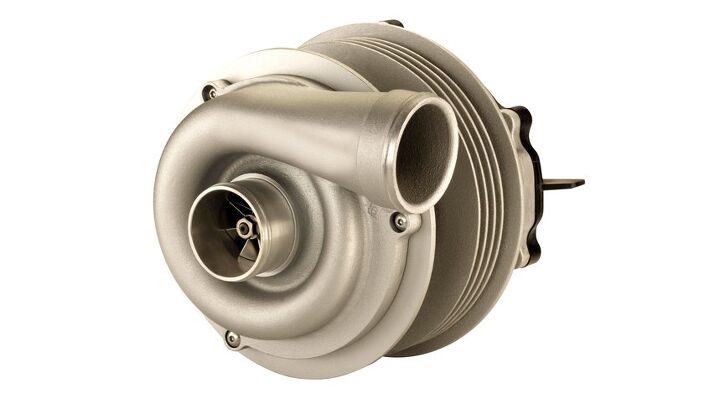Report: Electric Turbocharging Could Provide Fuel Economy Boost
Though full electrification might not be in the cards for most consumers, those looking for turbo power for their vehicles could find a little bit of that black magic in the turbo itself down the road.
A report by Navigant Research posits that the best way to eliminate lag without using a supercharger to make up for said lag — at the expense of increased friction at higher speeds — an electric turbocharger may be the best bet yet. The technology offers a handful of improvements over exhaust-driven units, including packaging of components, responsiveness and flexibility.
Supplier Valeo recently unveiled such a piece — for 12V and 48V electrical systems — with the first applications coming online in 2016. According to their findings, the best application for the turbo is with an engine that uses cylinder deactivation to maintain fuel economy. As power is reduced with cylinder count, an electric turbo can help with small boosts in power to tackle situations that would otherwise switch all of the cylinders back on, such as mild-and-above inclines.
Meanwhile, engineers wouldn’t have to figure out where to package all of the plumbing required for an exhaust-driven turbo with an electric unit, allowing for a placement that provides the best peformance and setup.
Seattle-based writer, blogger, and photographer for many a publication. Born in Louisville. Raised in Kansas. Where I lay my head is home.
More by Cameron Aubernon


































Comments
Join the conversation
Volvo recently used an electric turbo-charger (or whatever the B&B decide to call it) on a one-off prototype 2.0L 4-banger. The electric turbo was used to spool up two conventional turbos, thereby eliminating turbo lag (reportedly). They also claimed said motor delivered 450HP. Yowza.
On the first glance this seems bogus because the electric energy to drive the turbopump comes from the power produced by the engine, whereas in traditional turbocharger the otherwise wasted energry of the exhaust gases is used. Scavenging the waste heat is what drives the research in exotic extra-expansion engines (such as "5-cycle") or the BMW's steam-compound engine. From the elementary thermodynamic considerations, this devices could help a lot with the turbo lag, but will not help efficiency at all.
I invented just such a system in 1988, with parallel air flows from what was termed the Electrocharger and a regular turbo. A spring-pressure activated vane at the V junction allowed whichever air stream was stronger to use the vane to close down the path from whichever compressor produced lesser dynamic flow. When the turbo was really puffing, the vane would close off the pipe from the electrocharger, activate a microswitch, and through a control system turn off the electrocharger's motor. No doubt dozens of other people have had similar ideas for decades. It is hardly revelatory. The problem that stopped me was the huge horsepower required to operate the electric motor, the gigantic wiring needed for thousands of amperes at 12 volts, and how the battery would react to almost short- circuit conditions repeated time and again. I'm going to be most interested to see how this thing works in practise.
Isn't this similar to what Audi put in the RS5 TDI concept? In that case providing pre-boost before the 'real' turbos come online. http://autophorie.de/wp-content/uploads/2014/05/audi-rs5-tdi-electric-turbocharger-3.jpg Particularly useful to alleviate traditional turbo lag...